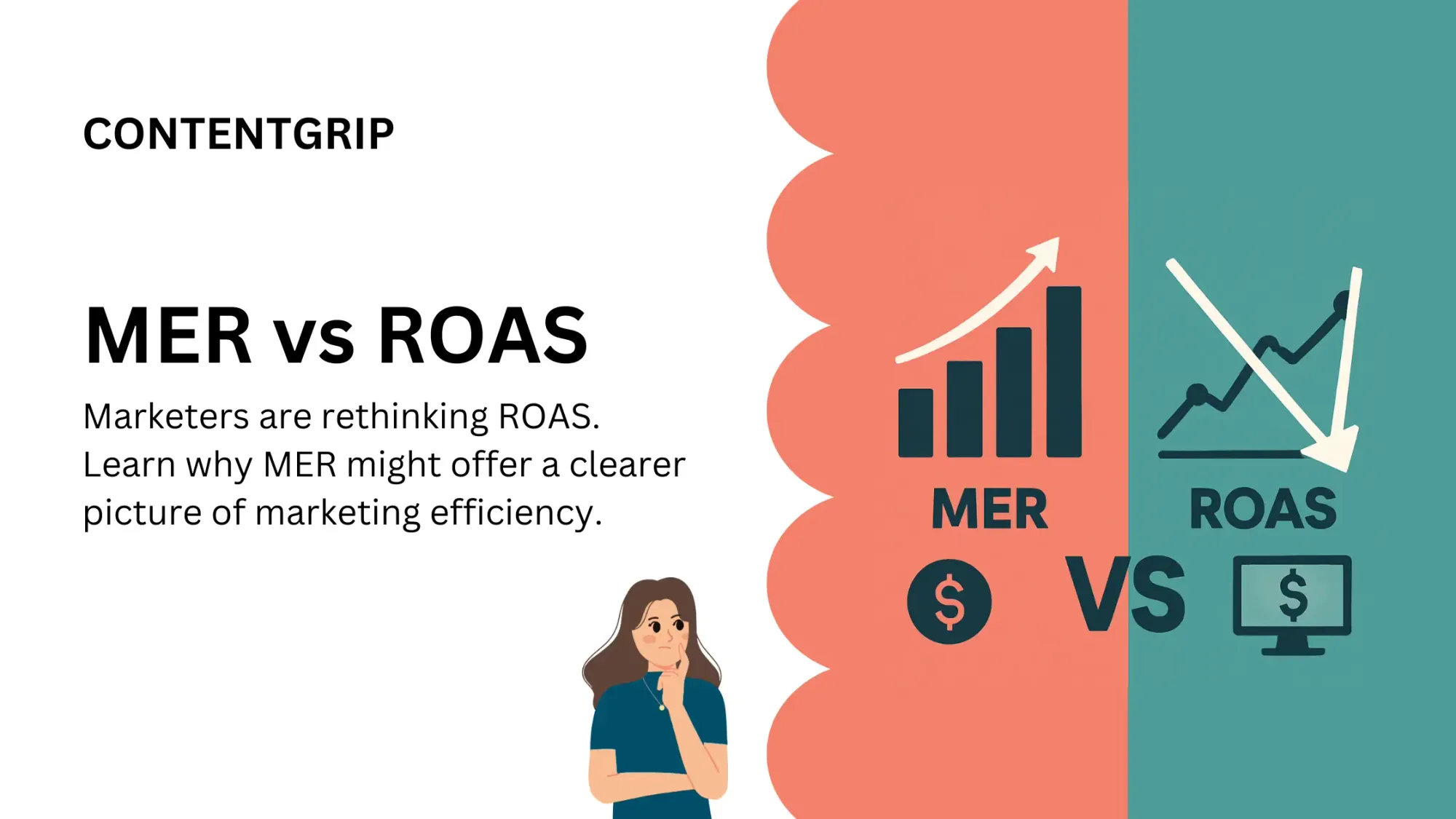Why ROAS is misleading marketers and what to use instead
ROAS might be killing your long-term growth. Here's why MER could be the smarter bet.

Return on ad spend (ROAS) has long been the MVP metric in digital advertising, the go-to statistic that marketers wave around in boardrooms and agency calls. But a closer look reveals it might be leading marketers astray.
This article explores why ROAS often fails to reflect the full picture of your marketing performance—and why Marketing Efficiency Ratio (MER) is fast becoming the smarter alternative based on Genius Monkey’s white paper.
Whether you're working with multi-channel campaigns or trying to prove long-term growth, understanding the nuances between these two metrics could be the difference between scaling profitably or cutting the wrong campaigns.
Short on time?
Here’s a table of contents for quick access:
- Why ROAS doesn't tell the whole story
- What is MER, exactly?
- What makes MER a better metric
- When to use ROAS vs when to use MER
- What marketers should know

Why ROAS doesn't tell the whole story
ROAS calculates revenue generated per dollar spent on a specific ad channel. That might sound efficient, but it creates a misleading incentive.
For example, if a marketing platform reduces spend and conversions still trickle in from users already in the funnel, ROAS spikes. On paper, it looks like a win—but in reality, you may be killing your future pipeline by starving prospecting efforts.
The Genius Monkey white paper makes it clear: ROAS encourages channel-level optimization at the expense of holistic performance. It doesn’t account for how channels influence each other, or the cumulative impact of awareness efforts.
What is MER, exactly?
MER stands for Marketing Efficiency Ratio. It measures how efficiently your entire marketing budget converts into revenue—regardless of which channel gets the final click.
The formula:
MER = Total Revenue / Total Marketing or Ad Spend
Where ROAS looks at a single channel’s return, MER looks at the whole ecosystem—factoring in the halo effect of awareness, retargeting, and brand lift across campaigns.
It’s basicallu similar to TACoS (Total Advertising Cost of Sale) on Amazon, but applies to broader marketing.
If your company earned US$500,000 in revenue from US$100,000 in total marketing spend, your MER is 5.0. That’s five dollars back for every one spent—across all touchpoints.
What makes MER a better metric
Enter MER, or Marketing Efficiency Ratio. It calculates total company revenue against total marketing spend—capturing the combined effect of all touchpoints. Think of it like TACoS in Amazon marketing: it's a full-funnel, business-first metric.
By using MER, marketers can measure how every dollar of ad spend contributes to overall business performance. It also reflects the "halo effect"—where a display ad leads to a search, which leads to a retargeted click, and finally a conversion.
ROAS might only credit the last click. MER credits the journey.
When to use ROAS vs when to use MER
ROAS still has its place—just not where many marketers are using it. If you're A/B testing creative within a campaign or optimizing bids inside one platform, ROAS can provide useful short-term feedback.
But when it comes to big-picture questions like: “Which channel drives growth?” or “Is our overall marketing budget effective?”
—MER is the better lens.
An example from the white paper: A programmatic campaign for a grad school may not show strong ROAS in its early days, but it contributes to later conversions on Facebook, referral sites, or Google Search. MER credits the full journey.
What marketers should know
1. Stop chasing vanity ratios
Chasing a 6:1 ROAS by slashing spend might impress stakeholders short-term, but it often leads to weaker pipelines and higher costs later. If your only metric is ROAS, you're likely cannibalizing future growth.
2. Adopt MER to support full-funnel strategies
Modern marketing is integrated. Email influences search, search affects social, and everything loops back to awareness. MER helps you invest confidently across the full funnel.
3. Build systems for MER measurement
To make MER actionable, you need cross-channel tracking and unified data. That means pulling revenue and spend across platforms—not just ad managers. CRM integration, attribution modeling, and clear KPI alignment are all required.
ROAS was built for a siloed marketing world. Today’s marketers need a metric that sees the bigger picture.
MER isn’t just a better benchmark—it’s a sanity check in a fragmented, multi-touchpoint landscape. If you’re still measuring each channel in isolation, it might be time to switch.




